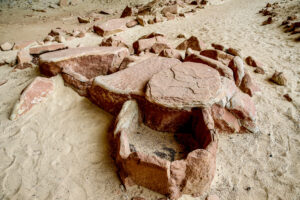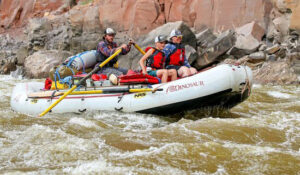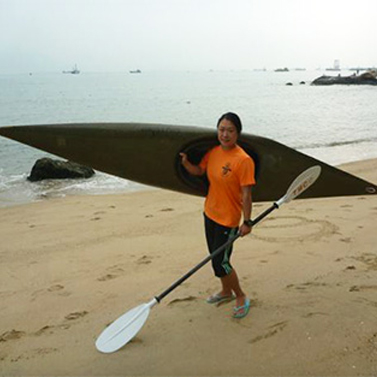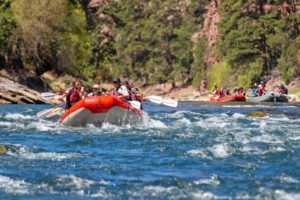Wonders of the Yampa River
Exploring the Wonders of the Yampa River in Dinosaur National Monument: 5 Fun Facts
Nestled within the breathtaking landscapes of Dinosaur National Monument, the Yampa River weaves its way through rugged canyons, offering visitors a unique and unforgettable experience. Beyond its stunning scenery, the Yampa River holds a treasure trove of interesting facts that make it a must-visit destination for nature enthusiasts. Let’s dive into five fun facts that make the Yampa River in Dinosaur National Monument a remarkable natural wonder.
Last Wild River in the Colorado River System:
- One of the most remarkable aspects of the Yampa River trip is that it remains the last major, free-flowing river in the Colorado River Basin Water System. Unlike many rivers in the region that have been dammed and regulated, the Yampa flows freely, maintaining its natural course. The wilderness not only preserves the river’s unique ecosystem but also provides an authentic and untamed experience for those who venture along its banks.
Riparian Wonderland:
- The Yampa River corridor is a haven for diverse flora and fauna. The riparian habitat along the riverbanks supports a rich array of plant and animal life. Cottonwood and willow trees provide shade, while numerous bird species, including bald eagles and peregrine falcons, call the area home. The vibrant ecosystem along the Yampa makes it an ideal destination for birdwatchers, nature photographers, and anyone eager to witness the beauty of unspoiled wilderness.
Petroglyphs and Pictographs on the Yampa River:
- Dinosaur National Monument is renowned for its wealth of prehistoric treasures, and the Yampa River is no exception. Along its winding course, you can find ancient petroglyphs and pictographs created by Ancient Native American communities that once thrived in the region. These rock art sites offer a glimpse into the cultural history of the area, adding a layer of historical significance to the Yampa River’s already captivating scenery. Deep in the Yampa River corridor is Mantle Cave, it’s set back from the river banks. There are granaries and other evidence of the Fremont culture, at one point a variety of items were found in this cave such as flake stone tools, ground stone, bone implements, bags made of hide and netting, coiled basketry, snares, cordage, matting, moccasins, headdresses, corn and more. There were approximately fifty storage pits of various kinds found.
Yampa Whitewater Wonderland:
- For adventure seekers, the Yampa River offers an exhilarating whitewater experience. The Yampa boasts thrilling rapids, making it a popular destination for rafting enthusiasts. The river’s rapids range in difficulty, providing options for both seasoned rafters and those new to the sport. The unique combination of adrenaline-pumping rapids and stunning canyon landscapes makes a Yampa River rafting trip an unforgettable adventure. The whitewater can be thrilling all while you meander through the Weber Sandstone Canyon that brings the canyon to life.
Dinosaur Fossils Along the Banks:
- As the name suggests, Dinosaur National Monument is famous for its dinosaur fossils, and the Yampa River corridor is no exception. Fossilized remains of dinosaurs, including the Allosaurus and Stegosaurus, have been discovered in the rocks along the riverbanks. Hiking trails in the area provide opportunities for visitors to explore these fossil sites, connecting them with the ancient past and the incredible geological history of the region.
The Yampa River in Dinosaur National Monument is a natural wonder that seamlessly blends adventure, history, and ecological diversity. Whether you’re seeking the thrill of whitewater rafting, exploring ancient rock art, or simply soaking in the scenic beauty, the Yampa River offers a myriad of experiences that make it a destination worth discovering. Dinosaur River Expeditions has experienced guides and the proper gear to provide many of these opportunities on our multi-day whitewater adventures. As you embark on your journey along the Yampa, let these fun facts serve as a guide to unraveling the wonders that make this river a true gem within the expansive landscapes of Dinosaur National Monument.






























